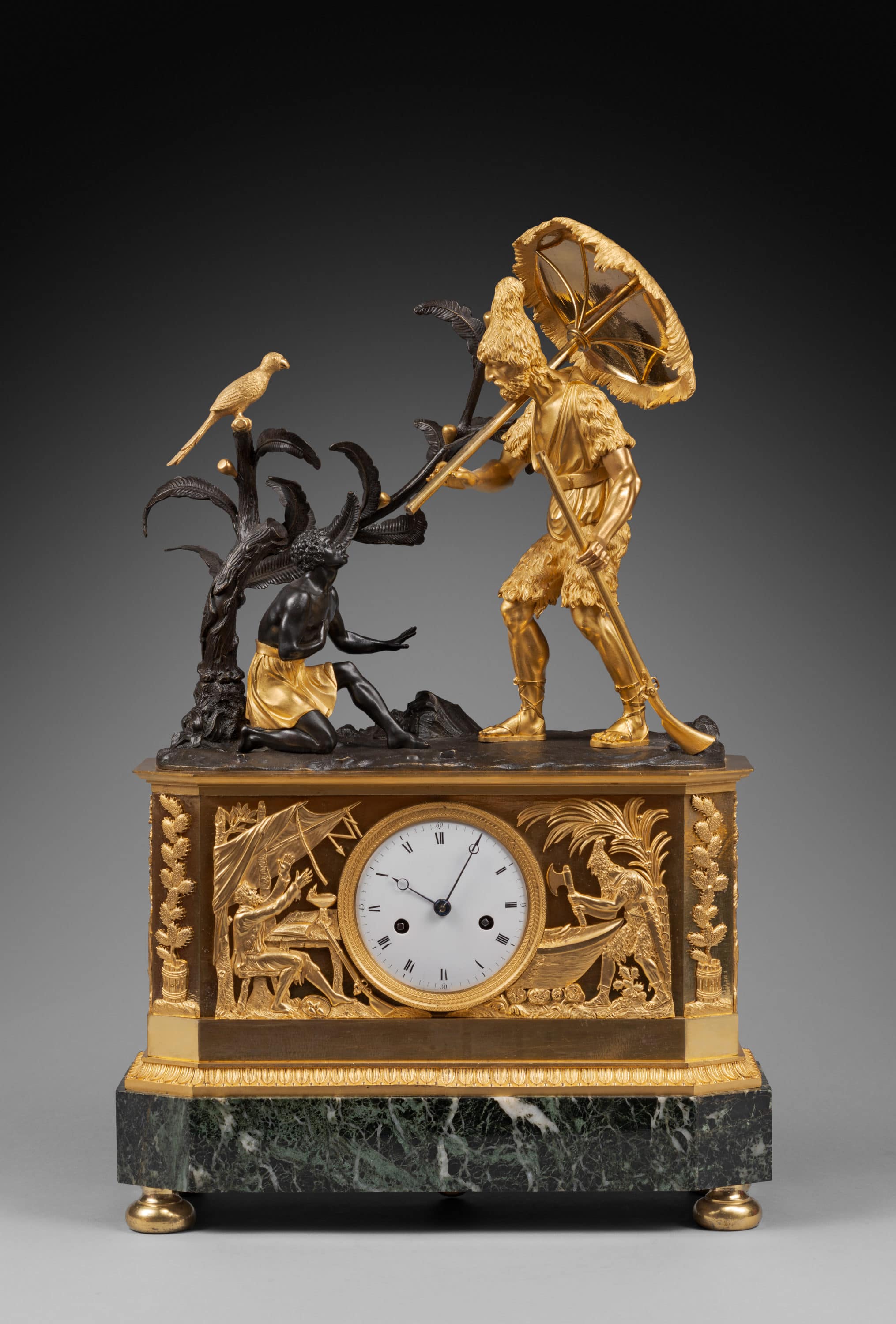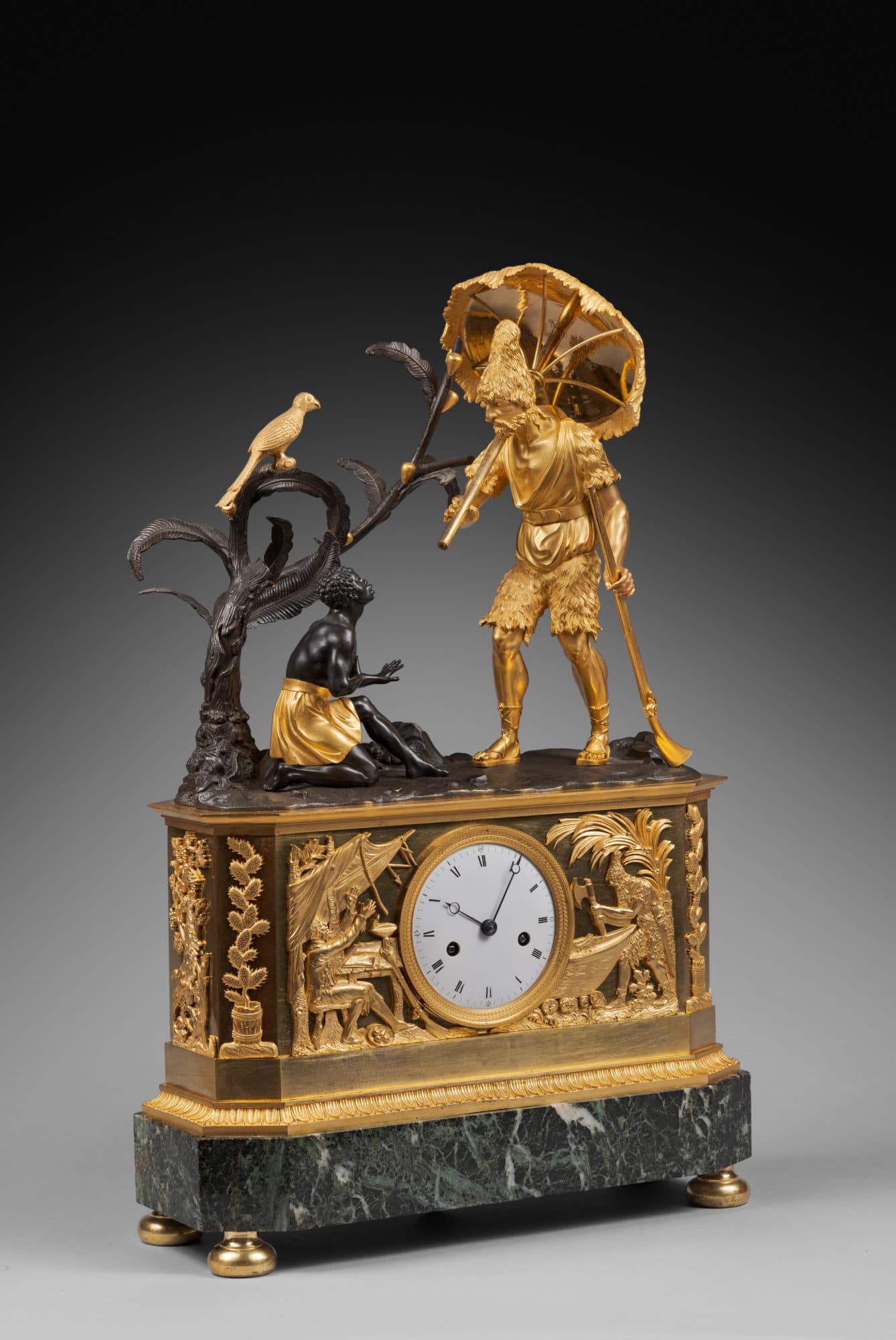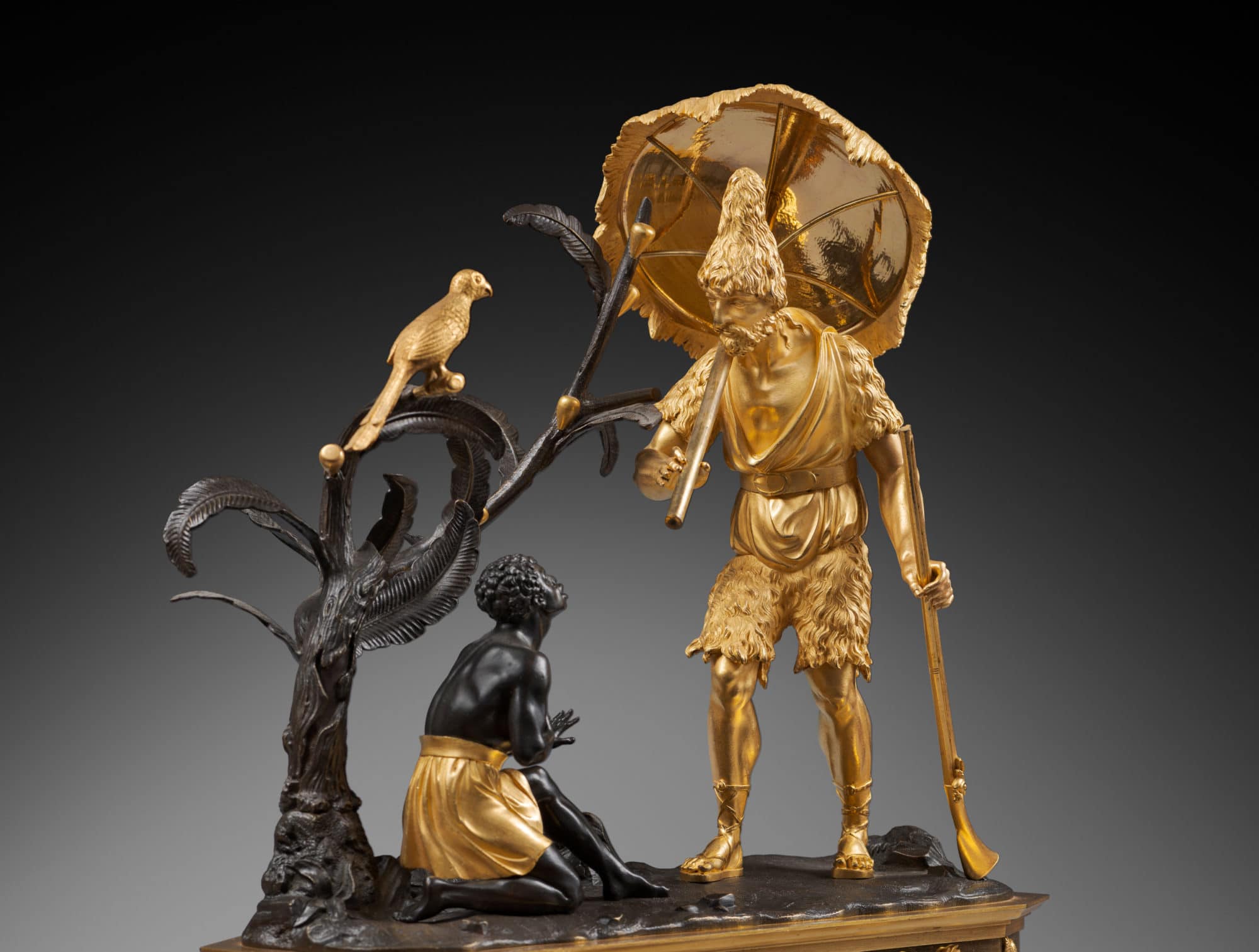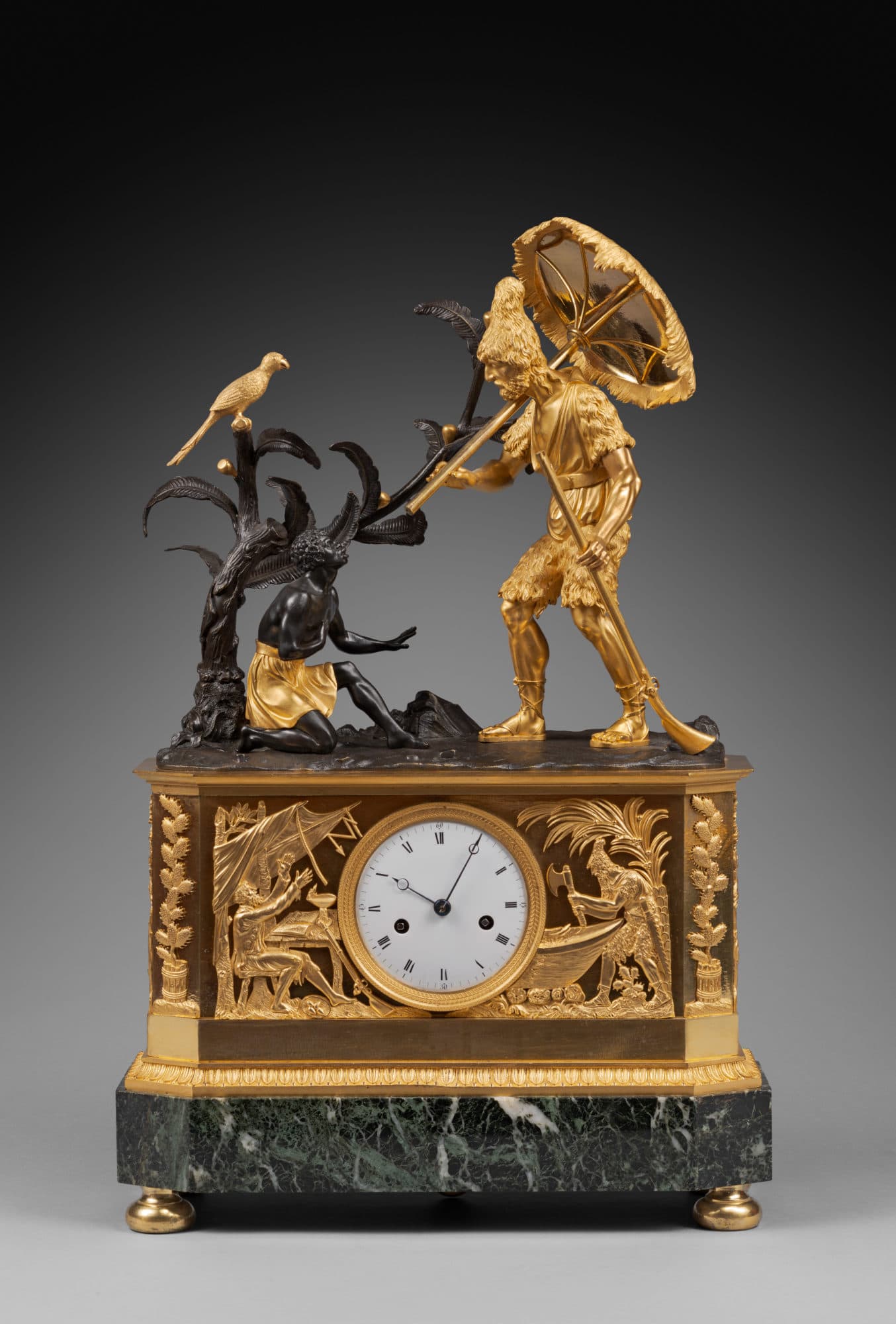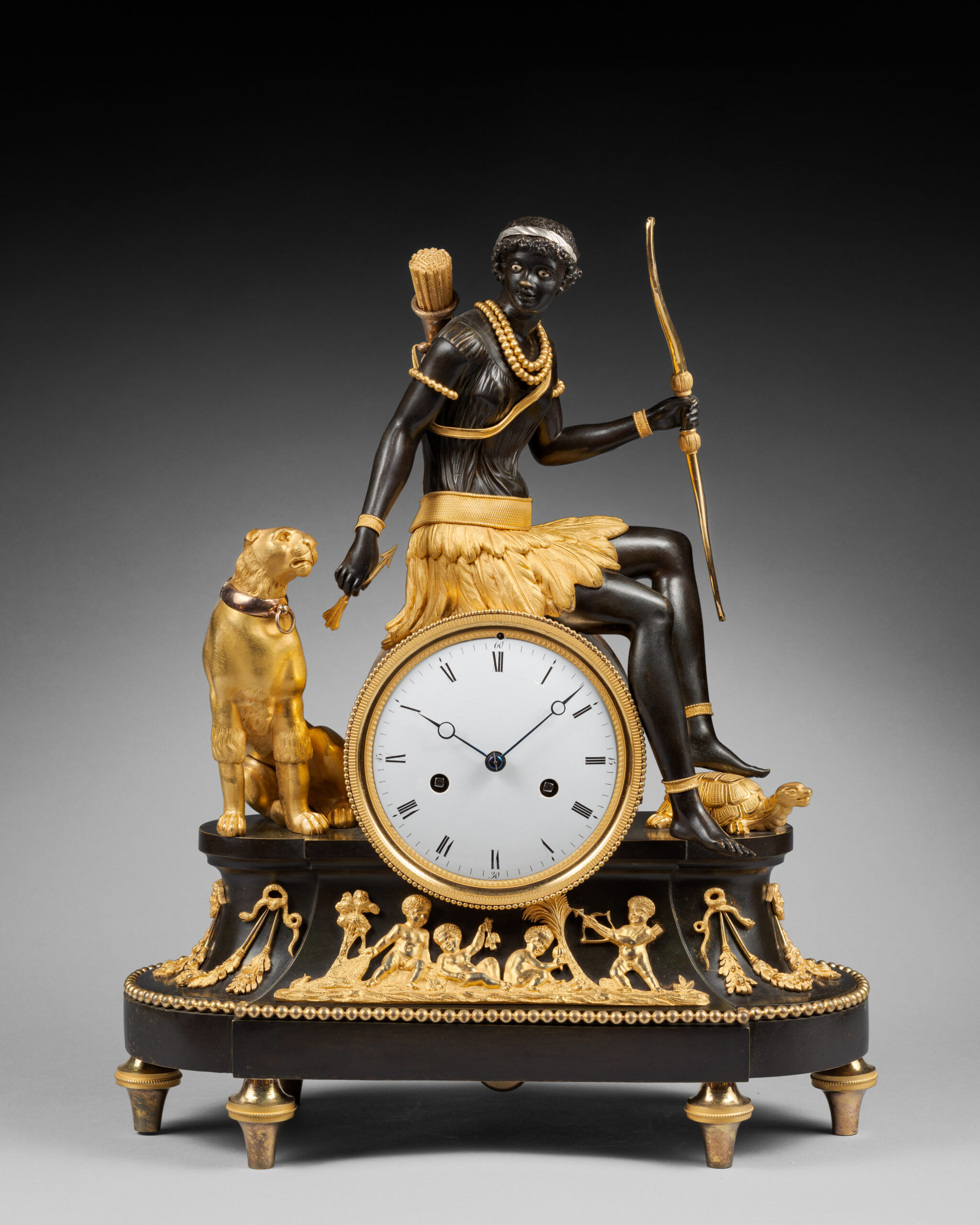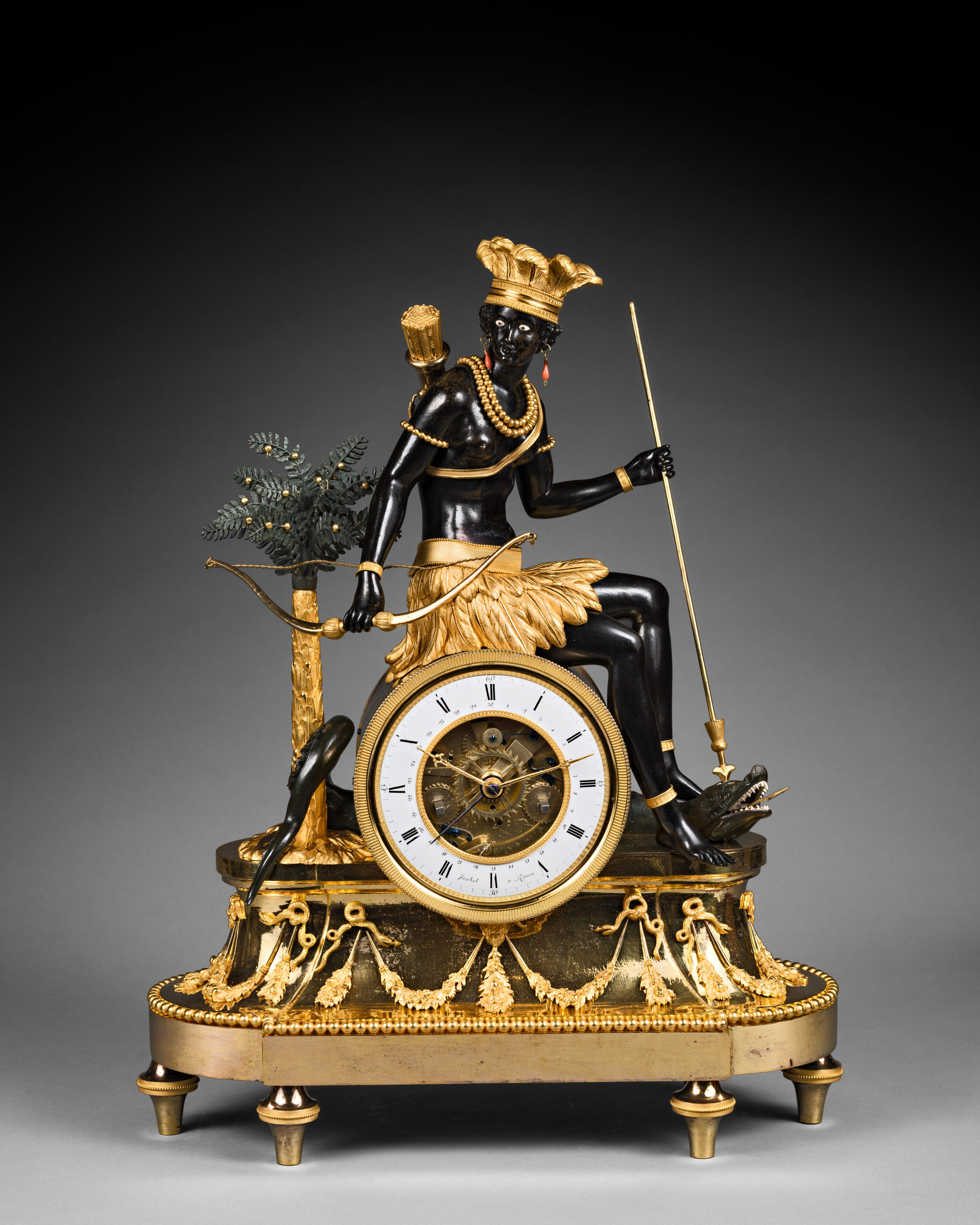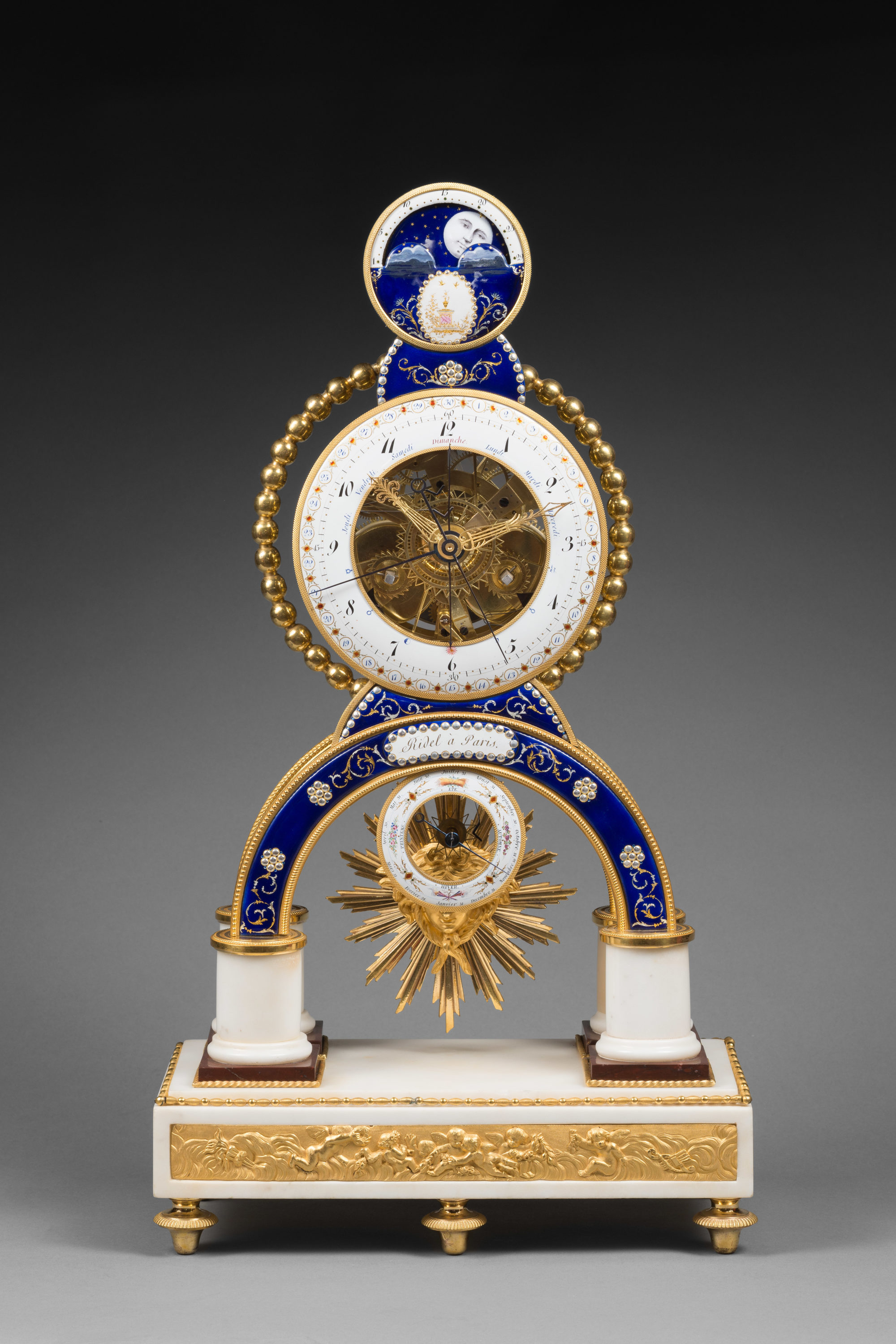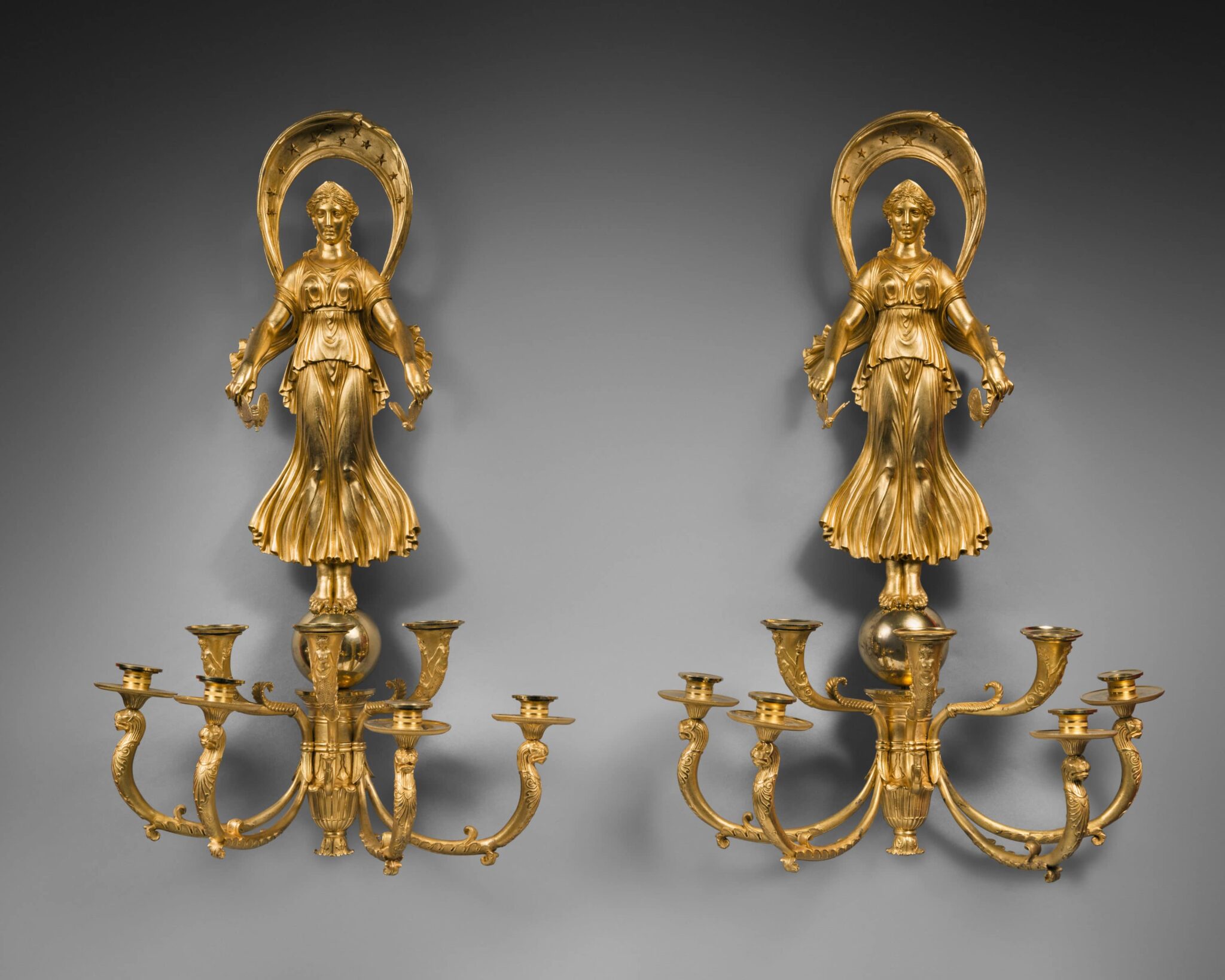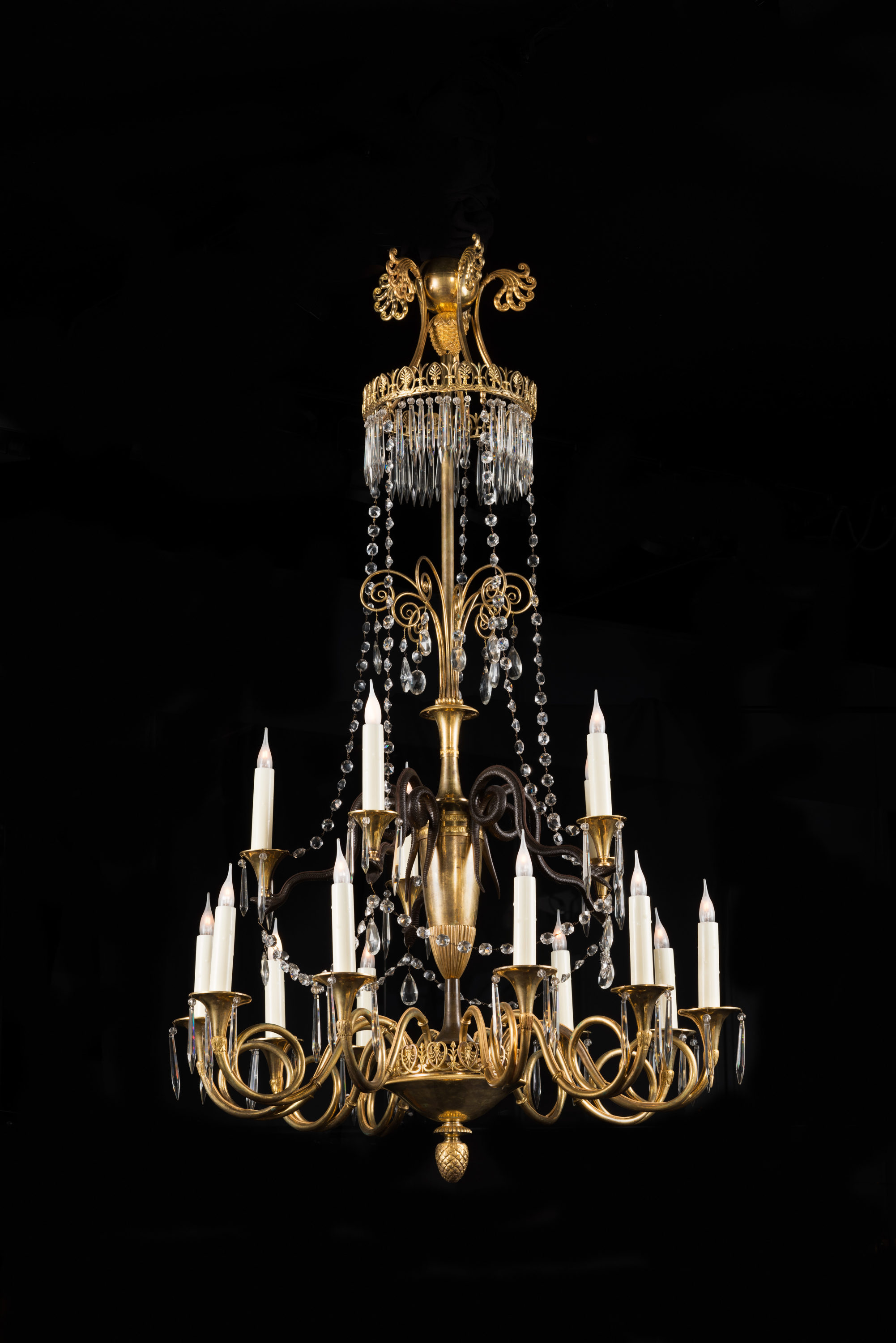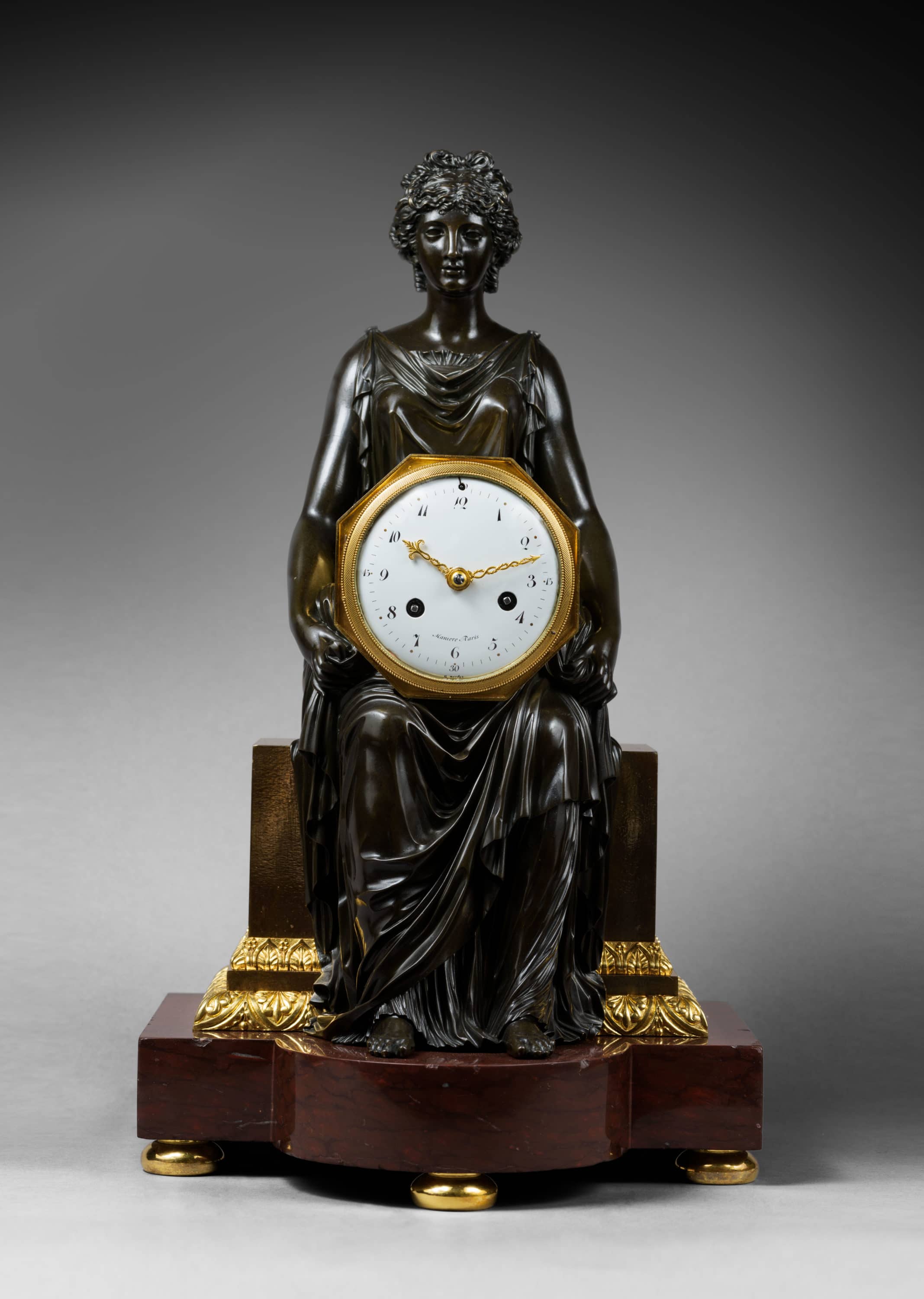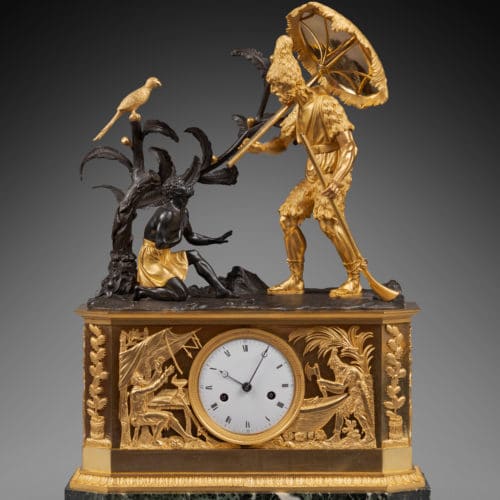Important Patinated and Matte Gilt Bronze and Green Marble Mantel Clock
“The Meeting of Robinson Crusoe and Friday”
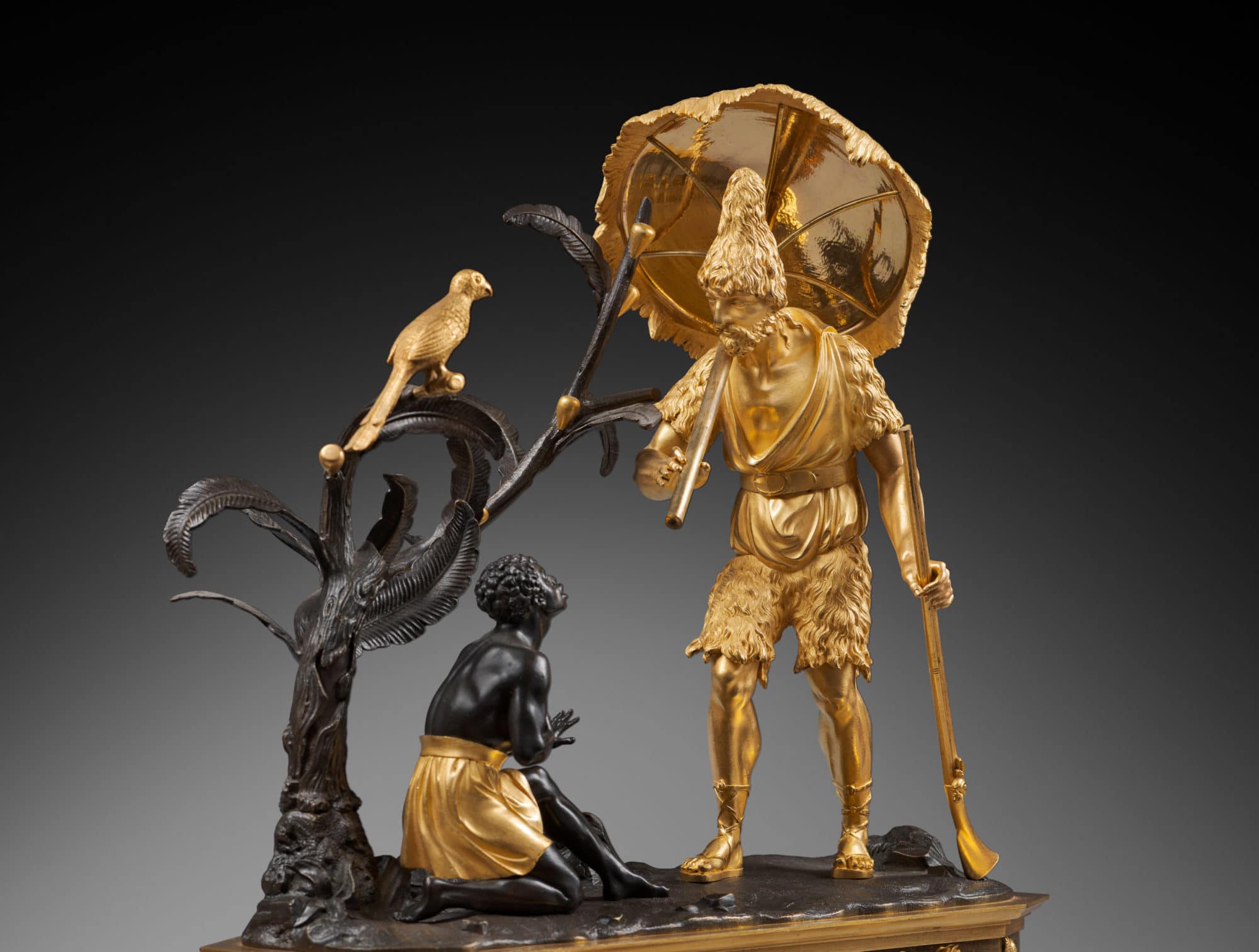
Case Attributed to Claude Galle
Paris, Directoire period, circa 1800
The round white enamel dial, indicates the Roman numeral hours and the Arabic numeral five-minute intervals by means of two blued steel Breguet hands. The bezel is adorned with leaf and bead friezes. The movement is housed in a rectangular case with canted corners that is made of finely chased gilt bronze with low-relief motifs. On the sides, goats standing on their hind legs are eating grapes; the façade is decorated with scenes depicting a despairing Robinson Crusoe under an improvised tent as a storm rages around him; another scene shows Crusoe building a boat near a lemon tree. The corners of the case are adorned with barrels issuing stylized cactuses. On the plinth, which is depicted as a naturalistic terrain, the young native Friday, posing with one knee on the ground, meets Robinson Crusoe, clad in goatskins and holding a parasol in his right hand and a rifle in the other. Behind Friday there is a lemon tree with golden fruit, upon which a parrot is perched. The clock rests on a green marble rectangular base with canted corners, which is embellished with a frieze of alternating stiff leaves and stems. It is raised upon four flattened ball feet.
Discover our entire collection of antique mantel clocks for sale online or at the gallery.
La Pendulerie is the specialist in fine and rare antique clocks, based in Paris.
Directly inspired by Daniel Defoe’s famous novel, which was published in 1719, the present clock is one of the finest and most successful examples of the latter part of the 18th century. Today very few identical models are known. Among them, one example is illustrated in P. Heuer and K. Maurice, European Pendulum Clocks, Decorative Instruments of Measuring Time, Munich, 1988, p. 92, fig. 159. A second clock, with a red griotte marble base, is pictured in P. Kjellberg, Encyclopédie de la pendule française du Moyen Age au XXe siècle, Les éditions de l’Amateur, Paris, 1997, p. 359. A third example, with a marble base, is shown in G. and A. Wannenes, Les plus belles pendules françaises, De Louis XIV à l’Empire, Editions Polistampa, Florence, 2013, p. 307. A fourth clock, with a gilt base, is on display in the Pitti Palace in Florence. Two further comparable clocks, one with an original and unique design, and both with dials signed “Leclerc à Bruxelles”, are in the Musée François Duesberg in Mons (see Musée François Duesberg, Arts décoratifs 1775-1825, Bruxelles, 2004, p. 64-65).
Claude Galle (1759 - 1815)
One of the foremost bronziers and fondeur-ciseleurs of the late Louis XVI and Empire periods, Claude Galle was born at Villepreux near Versailles. He served his apprenticeship in Paris under the fondeur Pierre Foy, and in 1784 married Foy’s daughter. In 1786 he became a maitre-fondeur. After the death of his father-in-law in 1788, Galle took over his workshop, soon turning it into one the finest, and employing approximately 400 craftsmen. Galle moved to Quai de la Monnaie (later Quai de l’Unité), and then in 1805 to 60 Rue Vivienne.
The Garde-Meuble de la Couronne, under the direction of sculptor Jean Hauré from 1786-88, entrusted him with many commissions. Galle collaborated with many excellent artisans, including Pierre-Philippe Thomire, and furnished the majority of the furnishing bronzes for the Château de Fontainebleau during the Empire. He received many other Imperial commissions, among them light fittings, figural clock cases, and vases for the palaces of Saint-Cloud, the Trianons, the Tuileries, Compiègne, and Rambouillet. He supplied several Italian palaces, such as Monte Cavallo, Rome and Stupinigi near Turin.
In spite of his success, and due in part to his generous and lavish lifestyle, as well as to the failure of certain of his clients (such as the Prince Joseph Bonaparte) to pay what they owed, Galle often found himself in financial difficulty. Galle’s business was continued by his son after his death by his son, Gérard-Jean Galle (1788-1846). Today his work may be found in the world’s most important museums and collections, those mentioned above, as well as the Musée National du Château de Malmaison, the Musée Marmottan in Paris, the Museo de Reloges at Jerez de la Frontera, the Residenz in Munich, and the Victoria and Albert Museum in London.
Discover our entire collection of rare clocks on La Pendulerie Paris.
